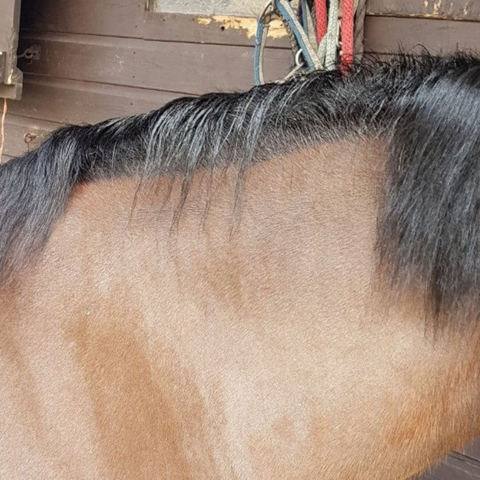Mane loss is one of the most frustrating dilemmas in the horse world.
Possibly the biggest question we get asked over and over again is 'will this hood prevent mane loss', particularly as Winter sets in and we start to think about temperatures dropping and heavier gram rugs being used. Yet isn't this ironic? The warmer we try to make our horses, is often when the mane loss begins. We notice every year as we increase our rugging, the mane becomes finer, which eventually leads to full sections missing.
In this blog, adapted from Horzehoods UK themselves, we discuss the many factors involved, and look at their research into how a skinny hood like a Horzehood can assist.

Horses were of course not originally developed with a rug on their back. Over centuries and through domestication they have adapted, or should we say we have adapted them to become more dependent on us. We clip them, exercise them, work them to high levels and change their full natural program, therefore we take responsibility for their care. For example we clip them so their natural thermodynamic system can not work the same, therefore we rug them, but who is to say what rug gram we can and should use? After all each horse has their own breed, height, build and Thermoregulation System.
As owners we often over rug. We as humans feel an emotional link to assuming that the horse thinks like us. In wet or windy weather, we think 'it's so cold' because we are so cold, and we rug our horses up assuming they feel the same way.
How Does Thermoregulation Work?
Reference Credits taken from Stance Equine USA.
The ability of the hair/coat to regulate body temperature is directly related to its length, thickness and density per square inch of surface area of skin. Each hair follicle has a small muscle that is controlled by the nervous system. These muscles can pull the hairs to a standing or “puffed up” position in order to increase the insulating factor of the hair/coat. When raised, the hairs will effectively trap a layer of air, which is then heated by the body, creating a toasty warm insulating layer. When the horse’s body begins to get too warm, the coat is easily flattened, thus decreasing the amount of insulation, increasing new airflow to the skin and providing a cooling effect.
Unfortunately, when humans rug a horse, the weight of the rug forces the hairs to lie flat. This means the horse no longer has control over regulating its own temperature. It also means the hair muscles don’t get exercised, which leaves them in poor condition. When we clip or rug horses, we hinder their natural ability for thermoregulation, leaving them vulnerable to becoming too hot or too cold. No matter how attentive and careful we are, we will never be as good as the horse’s own natural body and coat at self-regulating for ideal body temperature in any given moment.
Despite what many humans believe, horses are naturally very well adapted to deal with cold conditions. In fact, it is easier for them to warm themselves up than to cool themselves down. Unlike dogs, horses cannot pant to lower their body temperature. They must rely on sweating to cool the skin’s surface as the moisture evaporates. Many horse owners believe clipping is good because it helps a horse to cool itself. Unfortunately, it also takes away their ability to warm themselves. In nature, a sweaty or wet horse will later raise the hairs of its coat and turn them in different directions to allow the air to dry the moisture so they can warm back up. Ventilation and airflow are key in this process. Regardless of whether a horse is clipped or not, when drying takes longer than usual due to limited airflow in a stable, this can lead to chilling.
So with the Scientific points out of the way, that does not help with the fact that the majority of owners have horses to ride and/or compete on, which means we simply have to be practical, and sometimes allowing the horse to be as nature intended is just not possible. Many times you will hear owners say 'forget rugs and hoods, it is just elbow grease'. Although factual to an extent, this does not sit with reality of circumstance for a lot of owners. A high percentage of horse owners have to work long, hard hours to pay for this hobby, and with working and life it then becomes near impossible to spend hours grooming all the mud off so you can ride. By the time you have groomed as best you can with your elbow grease, you realise it is time to get home to start tea for the family. This is not being lazy, this is not lacking in motivation, it is simply called reality for so many horse owners across the world.
It is clear that rugs and hoods are rightfully here to stay and can be such a life saver in the above scenario.
We have trialled and researched and listened to our customers who have sent in photographs of their horse's mane and skin problems, and from this we have detected a pattern of reason as to why it may be happening.
As asked by so many of you, based on our experience we have put below some reasons and tips which will hopefully help towards saving your horse's mane:
-
There is a build up of grease.
A build up of grease, oils and so forth causes the grease to stick on to the inside of your turnout rugs, this process then makes the inside of the neck rug sticky pulling follicles out every time your horse moves its head and neck around. To prevent this you could use hoods underneath to act as a barrier in between the mane and neck rug. Many customers have several hoods and will rotate them throughout the week. Another way of preventing grease is changing your rugs. Some owners may be inclined to keep the same rug on 24/7 which will unfortunately create grease build up. We therefore suggest rotating your rugs regularly. Another tip noted by staff and owners was to physically spray the inside of the rug with 'Mane and Tail Conditioner'. By spraying the mane and neck liner it not only leaves the mane in fantastic condition but equally stops a sticky base contact with the hair follicles, decreasing the risk of sticky build up.
-
Your Turnout Rug is not an ideal fit.
Unfortunately all rug brands are fitted differently and all horses have different muscle, shape and size, meaning a brand may fit one horse well and another not so well. As an owner we get to become familiar with what brands work for a particular horse and tend to stay with this brand.
-
The horse is too hot / rugs and hoods are too thick.
From our own experience, this is the biggest reason horses lose their manes. As explained earlier on, we are simply over rugging with kindness and essentially creating too much heat for the hair follicles to cope. When designing and creating the unique fabric blend for the Horzehoods, we experimented with many grams and weights. We spoke with customers and had real pressure to produce a thick fabric for customers to feel and think 'wow it is so thick, it must be great quality'. Customers wanted us to produce thick fabrics that perhaps are more durable to tears or sharp objects, but then came the question 'functionality over durability' or 'durability over functionality'? With horse wellbeing in mind and the practicality of helping reduce mane loss, the answer without a doubt was to choose a lightweight fabric blend. Upon trials and personal use of other brands before we made our own, it was completely obvious that the stretch hoods on the market were all far too thick. We realised for the ultimate coat shine, coverage, plait protection, mane trainer and mane loss prevention, that it would have to be a super lightweight texture. The cons of making hoods and bodies in this light breathable fabric were that it is so much harder to stitch, sew, manufacture and keep high grade, hence why other hood makers usually always choose thick grade, which is no different in price to produce. If you are using skinny hoods throughout the seasons, please remember to choose light, breathable, shiny fabrics that have a silky texture/feel to them just like the Horzehoods Hoods.
-
Field Buddies are having a good chew!
Just as the title says, your horses play buddies and can have a good grooming session or play and the mane is slowly being chewed away. Of course if this is the reason and you do need a full mane intact, then consider keeping a lightweight neck rug on to cover the mane area.
Below are tips and a quick breakdown of what we have discussed in the blog above.
TIPS
- Mane and Tail Conditioner.
- Hood protection (lightweight fabrics only).
- If using a high gram rug in winter, use a standard neck only or if you do need a neck, then team with a lightweight no fill neck rug or hood. This ensures body heat in the right places over the back and rump.
- Plaiting several thick plaits has been fed back to us by customers as helping under neck rugs.
- Check rug fit.
- Check horse's temperature and rug according to the day.
- Change rugs morning and night to create rotation.
- Do not over brush the mane, twice a week is sufficient.
- Keep mane well conditioned.
- Make sure there is silk or satin on the underside of the neck rug.
- Use shiny Spandex hoods to decrease friction and act as a barrier (not thick grade fabrics).
- Not a lover of full face hoods? Then check out the Horzehoods Headless Hood.
- Check your current Turnout rugs/hoods are not too thick.
Do you have any advice for our readers? Any successful tips you can share? Please feel free to comment on this blog.


